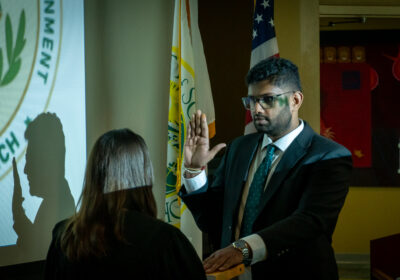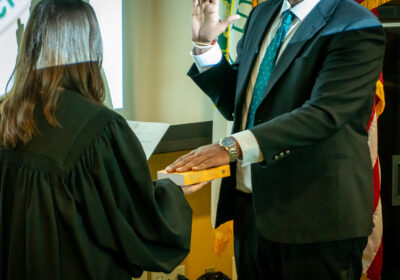Goo in Gulf of Mexico raises questions
It’s sticky, it’s toxic and it’s growing, but USF researchers have yet to discover what created the “ball of goo” in the Gulf of Mexico.
A team of USF researchers, helmed by associate professor of chemical oceanography David Hollander, first discovered the unidentified mass while aboard the Weatherbird II research vessel in December. Since then, the ball, located only one kilometer away from the shores of Orange Beach, Ala., in an area called Perdido Pass, appears to be growing.
“It’s really very sticky, so everything sticks to it and it grows, essentially,” Hollander said. “But what’s amazing is that from what we can see, the majority of what we have has formed in the last year. That’s an outrageous rate of sediment deposition.”
Even though the researchers haven’t found a connection to petroleum, Hollander said most of the substance – a compilation of dead organisms such as plankton – has accumulated last year, which may point back to the Deepwater Horizon oil spill and the use of dispersants in the Gulf.
Hollander said the team “got a sense that it was about a kilometer in diameter,” but was unable to reach the bottom of it with its equipment.
“We know from our coring system that it’s at least one meter thick,” he said. “We don’t know beyond that how deep it actually is, but that’s a really critical thing. We have no sense of how big this thing is in terms of its depth.”
He said the team plans on returning to the ball during its May cruise to continue its studies.
“We’ve never seen anything like this before in this type of location, it just doesn’t fit in the sedimentological point of view,” he said. “This is sort of misplaced, it seems like an orphan. Because of the dating, because of the organic richness, because of the toxicity in the kind of tests that we’re performing, it definitely needs some attention.”
The ball is located in only 27 feet, or nine meters, of water and has only impacted water adjacent to its surface, which means that swimmers near the Panhandle and Orange Beach are in no danger, he said. The information that has been collected on the ball has been handed over to the Department of Environmental Protection to determine if it warrants removal or more immediate investigation, he said.
“We can’t be sure how it initiated or what the interior of the material looks like, whether it is more toxic or less toxic than the outside of this thing,” he said. “But one thing we know for sure is that there was a sand layer on top of it, which means that it’s actually pretty cohesive – it doesn’t get blown away in storm events.
“It has a gelatinous character, which means it’s sort of like Jell-O. It’s at least firm enough not to be moved from moderate-sized waves where sand particles are moving all over. That might mean that it’s stable where it is, but growing.”
However, one trait of the substance isn’t as well contained.
“This stuff stank to all hell,” he said. “It was horrible. We had to actually sample it outside of the building it was so bad.”
The main focus of the researchers aboard the Weatherbird II, which returned from its most recent cruise Feb. 24, is deep-water research off the continental shelf. Since the oil spill, Hollander said the team has found that deep sedimentary environments in the Gulf are altered – disturbances that may be due to “blizzards” of particles suffocating bottom-dwelling organisms or subsurface plumes intersecting sediment surfaces.
“The consensus is – not only through our work but through others – is that the waters are clearing up beautifully and the story has transitioned to the sedimentary environment,” he said. “In some instances we see a complete lack of bioturbation, where the bottom-dwelling organisms burrow through the mud and sand mixing it up. We don’t see that at all … which is really unlike the oxygen-rich Gulf of Mexico.”
Though these problems may not be as visible or startling as an unidentified ball of goo, they still imply that the effects of the spill are far reaching, he said.
It’s a concept that Eddie Ciesla, a junior majoring in marine biology, has experienced first hand.
Ciesla and his family run the Brandon-based Woods and Water Scuba shop. While the spill hasn’t affected his business, which mainly runs scuba trips on the east coast of the state, he said it did frighten some divers.
“I know a lot of people who live out of state or even further away who made plans and tried to get charters down here to go diving in the Gulf to go spear fishing,” he said. “As soon as the oil spill hit they canceled their charters. A lot of people didn’t want to go diving because they were scared.”
Now, Ciesla said few customers seem concerned about going in the water, though the spill is still in the back of their minds.
“I was talking to somebody and they said they got sick because they ate bad fish over the weekend. I don’t know if it was just bad fish or if it was bad because it was a result of the oil spill,” he said. “But nowadays, you don’t hear anybody talk about it … We’re actually having a lot more people come to the dive shop, wanting to take scuba lessons and buy snorkeling equipment. Nobody has asked me so far about the oil spill.”






